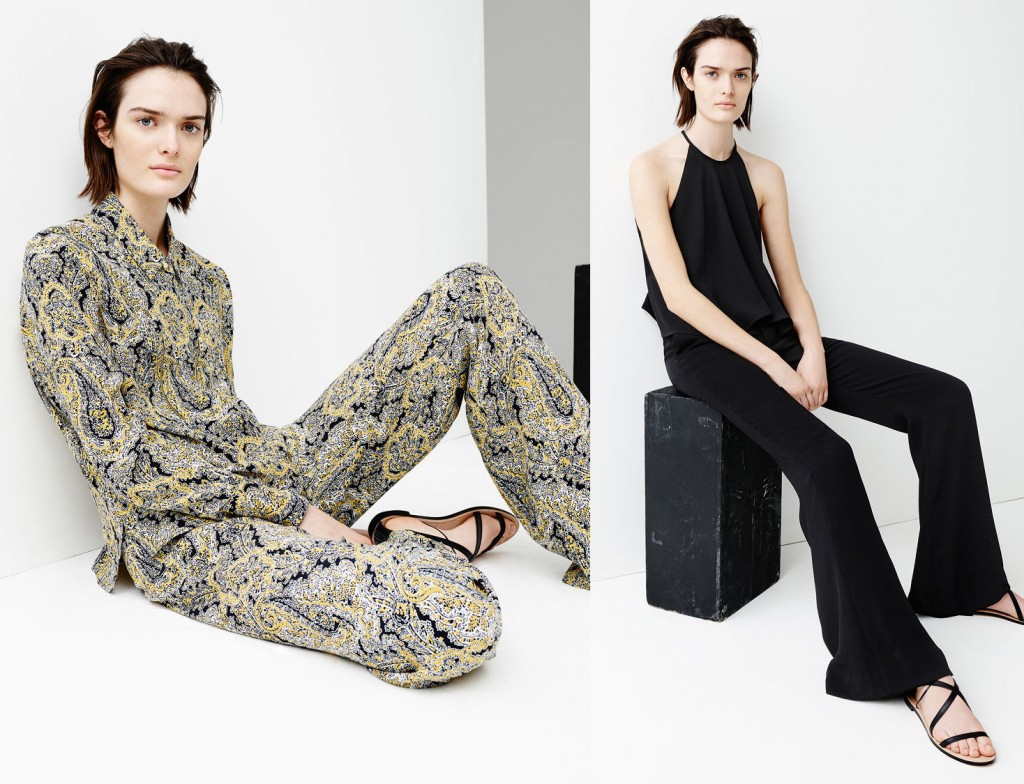Vv Magazine’s fashion editor Philip Mak examines the evolving socio-economic relationship between millennials and fashion In the post-hipster world…
With Fashion Arts Toronto (|FAT|) starting next week (April 21 to 25), the city’s fashion community is abuzz with excitement for five days of emerging talent and interdisciplinary exhibits, showcasing the best in the next generation of creativity. Following a lukewarm World MasterCard Fashion Week, with nary a household name on the roster other than maybe Pink Tartan, it feels as though the city’s sartorial economy is either suffering or due for a change.
It’s no secret that the billion-dollar fashion brand is a thing of the past. While Michael Kors became the industry’s latest (and potentially last) designer billionaire in 2014 –largely due to his brand’s soaring popularity in monogram-happy, status symbol-obsessed Asia– it seems that big name labels are giving way to smaller design houses. Ironically, Project Runway, the fashion design reality show Kors was a judge on for the greater part of a decade, has yet to produce the breakout star it promises to create. Instead, most of the contestants, including high-profile season four winner Christian Siriano, have fallen into creating niche lines — a sign of the times.
ADVERTISEMENT |
“Blame it on social media and millennials.”
Blame it on social media and millennials. Oh yes, and the recession. The post-2008 online era has led the charge on making the mainstream irrelevant. Hard to believe that just 15 years ago, high-end fashion shoppers were limited to catalogues, department store stock, and travelling to meccas such as New York and London to find what they wanted. Fashion weeks once dictated the trends of the upcoming season, to be featured in magazines six months later. Now, everything is on Style.com within a matter of hours. Not that fashion trends really matter any more, anyways. If Kendall Jenner Instagrams it today, it’ll be a trend tomorrow, and Zara will be selling it next week.
Social media has made individuality central to most fashionistas’ self-presentation. Getting dressed in the morning is less about looking like an editorial spread, and more about “Is this Instagram-worthy?” A blogger with unique style will garner more followers than somebody wearing head-to-toe branded designers. So hated is the brand loyalist now, they often get slotted into the category of “basic bitch.”
Millennial shopping behaviours are also wreaking havoc on larger fashion retailers. As noted on Forbes, brands like Aeropostale, American Eagle, and Abercrombie & Fitch have seen severe losses in the face of dwindling mall traffic. Why? Because millennials can do all their shopping on their laptop at Starbucks. (Well, that and these companies traditionally have plastered their clothing in branding and logos, leading to the aforementioned risk of being labelled a basic bitch.) According to a recent study by The Intelligence Group (TIG), “72% of millennials (aged 18-34) research and shop their options online before going to a store or the mall.” Furthermore, having so much selection at their fingertips has led to a shopping culture of aimless, 24/7 browsing but minimal buying. Millennials are loathe to purchasing items full price, with only 1/3 of younger shoppers willing to and only if they feel it is a necessary piece. Given the mall’s historic importance as a central hub for fashion, this does not bode well for many large-scale retailers.
ADVERTISEMENT |
“This is the end of fashion as we know it.”

One of the world’s most influential fashion forecasters, Lidewij Edelkoort, recently told Dezeen that she believes fashion is dead. Labelling the fashion industry, “a ridiculous and pathetic parody of what it has been,” she goes on to say, “This is the end of fashion as we know it. Fashion with a big F is no longer there. And maybe it’s not a problem; maybe it’s actually a good moment to rethink. Actually the comeback of couture, which I’m predicting, could bring us a host of new ideas of how to handle the idea of clothes.” Interestingly, entirely unique and highly conceptual pieces like couture are in keeping with the overall millennial/social media trend of individuality, and focus more on clothing as opposed to norms dictated by mainstream media.
Edelkoort places part of the blame on fashion bloggers, noting that they have replaced intelligent analysis with shallow reviews for the “’like’ generation.” She also notes issues effecting the industry include “a loss of competence in textile design, the failure to address sweatshop conditions at clothing factories, and the cosy relationships between fashion houses and magazines and bloggers, which ties editorial coverage to advertising budgets.” Forbes also touched on the fact that millennial shoppers shun brands without a corporate conscience, with 32% saying they wouldn’t shop from somewhere they feel have unsavoury social practices.
In a separate interview, Edelkoort also points the finger at fast fashion houses like Zara and H&M: “Prices profess that these clothes are to be thrown away, discarded as a condom and forgotten before being loved and savoured, teaching young consumers that fashion has no value. The culture of fashion is thus destroyed.” The instant satisfaction (read: dopamine rush) of being able to buy straight-off-the-runway knockoffs at an eighth of the price of designer has certainly bolstered the fast fashion market among younger shoppers.
Amrita Gill, owner of Queen West boutique Parloque and associated fashion line 111 (which will be presenting at |FAT|), tells Vv Magazine, “I think fashion is headed towards an extremely authentic, inspiring, and no bullshit direction. It’s becoming more real, raw, and is encouraging self expression as well as individuality. I think certain large brands will remain relevant; the ones that got this from the start and ones whom are evolving. But there will definitely be many who won’t survive through this shift.”
“By embracing creativity over trends, niche over norm, and universality over binaries, |FAT| has its finger on the cultural pulse.”

So, is fashion dead? Yes and no. Mainstream exhibitions like World MasterCard Fashion Week will continue to suffer as trends become increasingly irrelevant and household name brands stop appearing on the scene. Exhibitions like |FAT|, however, may be more indicative of the future. By embracing creativity over trends, niche over norm, and universality over binaries, the presentation has its finger on the cultural pulse. As Gill tells us, “The industry is being influenced and inspired more and more by the people: the artists, the innovators, and dreamers who embrace their individuality and are constantly pushing the boundaries, and evoking and provoking thought and emotion through fashion and style.” The fashion industry is Darwinian; you have to adapt or risk going extinct. Sorry, basic bitches.
ADVERTISEMENT |
What are your thoughts on the current state of fashion — is fashion dead? Let Vv Magazine know in the comments below and don’t forget to follow us on Twitter @ViewTheVibe.







